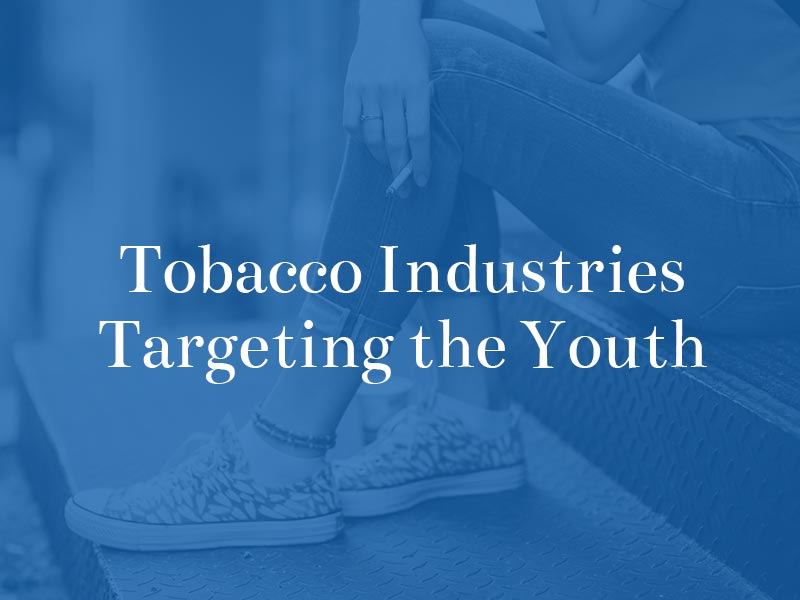A Voice for the Voiceless
The Dunken Law Firm is committed to helping each client find their voice and recover what has been lost.
START MY FREE CONSULTATIONFebruary 16, 2020 | Firm News
Youth tobacco use continues to be a problem in communities across the nation. With the use of advertising, sponsorship programs, and promotion, the tobacco industry has marketed towards young people for decades. It is vital to understand why youth is targeted, and which steps can be taken to normalize lifestyles that are tobacco-free.

“Replacement smokers” is a term coined by a tobacco company in 1984, when referring to young smokers. Companies believe the luring of new generations into nicotine addiction is critical to the tobacco industry’s future, since many addicts will either quit or die. A study conducted between 2012-2016 by the Centers for Disease Control and Prevention (CDC) proved that tobacco company advertising and promotion continue to influence young people to start using tobacco. Approximately 9 out of 10 smokers try their first cigarette before the age of 18. The study found that the following brands were favored:
Children are twice as impressionable as adults to tobacco marketing strategies, and do not understand the repercussions of smoking and nicotine addiction. Teens who smoke will likely continue into adulthood, where one of every two long-term tobacco users is killed by it.
The tobacco industry spends billions of dollars on ROI (return on investment) tactics each year, in order to get young people smoking and to keep them smoking. The ads are appealing, since they suggest that tobacco use will result in a positive self-image, peer acceptance, and popularity. A senior research scientist at the Stanford Prevention Research Center reports that point-of-sale advertising makes teens twice as likely to start smoking. Tobacco products are easily available to young people at low prices, encouraging impulse buys in gas stations, pharmacies, corner stores, grocery stores, mini-marts, and many other types of retailers. Online marketing has become especially profitable, reaching many kids without parental knowledge.
Major tobacco companies are also advertising flavored cigarettes, e-cigarettes or vaporizers, and chewing tobacco. Flavors, such as apple pie, cherry, blueberry, watermelon, chocolate mint, and more, are undoubtedly enticing to youth.
Almost twice as many high school students who smoked cigarettes, were vaping in 2016. Big tobacco markets vaping as a “safer” alternative to traditional cigarettes. With the addition of tantalizing flavors, and sleek designs that make them discreet and easy to hide from parents and teachers, it’s not surprising that e-cigarettes are used by over five million of today’s youth.
Data from the 2016 National Youth Tobacco Survey (NYTS) reported the following reasons why youth begin using e-cigarettes:
Despite an overall decline in cigarette and cigar use, tobacco companies remain stable due to the growing use of vaporizers in recent years.
The FDA has launched a Youth Tobacco Prevention Plan, and developed multiple campaigns, including one called, “The Real Cost,” that addresses e-cigarette smoking. The campaign site provides resources and education materials for those wishing to warn and teach kids about the harmful effects of tobacco use.
A recent outbreak of lung injuries related to vaping has disproved many of the claims by the tobacco industry that e-cigarettes are safer than traditional smoking. Nearly 3,000 have been either hospitalized or killed as a result of this illness. If you or your child is suffering from harmful effects of e-cigarette use, contact the mass tort attorney from the Dunken Law Firm, as you may be entitled to compensation. We offer free case evaluations, call (713) 554-6780 today.